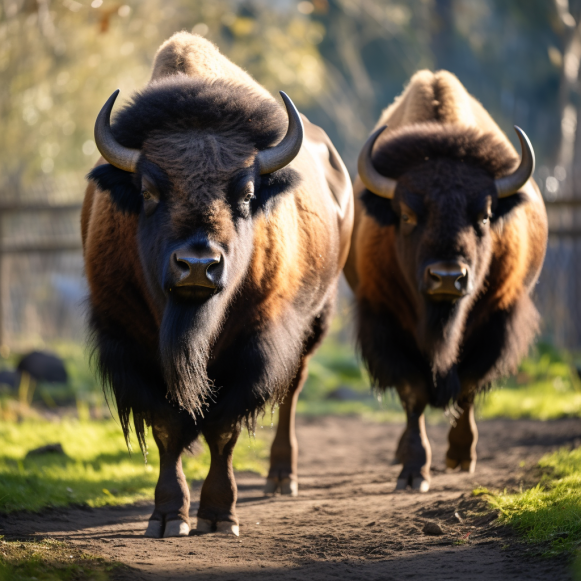Bay Area birdwatching tips for newbies

So you want to try birdwatching, or birding as some of us call it.
Something about our feathered friends piqued your interest. Perhaps a great-horned owl is hooting outside your window after dusk. Or a robin slurping up worms from your lawn. Maybe you saw a group of birdwatchers at the park across the street, hot on the trail of a rare warbler, and you’d like to join them.
Perhaps you overheard the ongoing debate over birb, borb, or floof. Which bird is cute, which bird is round, and which bird is fluffy? You will have an opinion on this, as I do.
Perhaps you’ve seen a “spark bird,” a magnificent creature that piqued your interest in birding.
BirdNote, a popular radio show, tells fascinating two-minute stories about how birds capture our attention. I told interviewer Mark Bramhill that my spark bird was a Vermillion Flycatcher, a glorious ruby. It’s a gleaming jewel of plumage and personality. This bird likes to show off. I was hooked within a few months of seeing my first one.
I soon found myself tweeting endless images of birds I’d seen. That’s how “BirdNote” discovered me. And that was my first lesson in the value of birding: capturing our enthusiasm for nature can help entice others to share our enthusiasm for birds and the discovery that they can inform your life, send you on adventures, and immerse you in mystery.
Birding is something that anyone can do. The elderly, the young, the disabled, the experienced, and the inexperienced. And you can see birds almost anywhere: in a park, on a city street, in a forest, along a pond, or deep within a nature preserve.
Birding Equipment
Get a copy of “The Sibley Guide to Birds: Second Edition,” which includes beautiful illustrations as well as quick reference guides for examining field marks and body types.
Birding “bins” — binoculars — that are lightweight make all the difference. Binoculars are required to see the full range of bird colors. And what about that bird in a tree 50 yards away? You won’t be able to see every field mark, and you might not even be able to tell if it has stripes on its tail. Bins range in price from a low-cost $50 pair to thousands of dollars. My $450 Zeiss came from “The Audubon Guide to Buying Binoculars.” That $50 pair is also listed.
Let’s talk apps as well, because we’re in the midst of a birding revolution. The ability to fully identify all birds within your listening range is rapidly approaching, and apps like Merlin Bird ID can help you identify birds you’re hearing and seeing. According to what I’ve seen, it’s about 80% accurate. Your experience and common sense will assist you in determining when an app is deceiving you. A mile away, there’s a jackhammer. Whatever your phone says, it’s not a Pileated Woodpecker.
Sign up for eBird or iNaturalist to log birds found on trails and submit checklists for approval by county moderators. Keeping track of your lists, overall counts at hotspots (in your county, state, and country), and life birds (bird species you’ve seen over time) is made easier by logging birds. You can also record birdsong on your phone and upload the audio.
Keeping online bird lists connects you to the larger birding community. The information you provide helps ornithologists understand migration patterns and nesting habits, as well as connects you with other birders.
A camera allows you to capture the sights and provide proof, which is especially useful when you come across a rarity. I use a Nikon P950 point-and-shoot camera with an integrated super zoom. It even has a “birding” setting. It’s not perfect, but it’s light and it gets the job done. (I used to use my iPhone to take photos through binoculars.)
Birding excursions
If you prefer, you can confine your bird adventures to your own backyard. Set out a dish of water or purchase a bird bath, hang bird feeders, and then look out your windows to keep track of all your feathered friends.
You can also go all in, hiking up mountain trails, walking boardwalks and grassland trails, visiting nature preserves and state parks with a friend or a large group of other birders. Audubon, MeetUp, and other local birding organizations organize outings, classes, and field trips to local parks and preserves.
The majority of my trips are either solo or with one or two other birders. I recently went birding with Kai Mills, a 23-year-old bird nest surveyor from Lafayette, at a nature preserve and a botanical garden along the central California coast. Mike Bush, 70, a retired horticulture and crop science lecturer who has directed botanical gardens in Singapore, Bermuda, and Oklahoma City, joined us. I ran into both of these experts while looking for birds.
I began telling Mills about a bird seen at the preserve, Sweet Springs Nature Preserve in Los Osos. It was a half-dark-eyed junco, half-white-crowned sparrow intergeneric hybrid so rare that it could only be recorded as a generic sparrow species. This bird will be removed from eBird’s system. It fades into obscurity, an anomaly. Mills noticed the bird foraging at the base of a tree just as I mentioned it. It was slightly larger than a junco and bore field marks from both species. Its song was an odd, junco-like trill that ended in “zeet zeet zeet.”
Finding this bird felt like a victory, and that sense of discovery is half the appeal of birding.
Mills began birding at the age of 12 in Lafayette, where he would go every weekend to see a rare swamp sparrow. “I re-spotted it after it was originally found,” he told me. “After that I was the first to find it every year for five winters.” He described how he saw it join a sparrow flock and forage along reeds. “I knew its habits, where it would be at different times of the day.”
He said it was satisfying to show other birders that sparrow. He claims it influenced his birding habits, which is why he emphasizes the importance of frequenting your local areas.
“Find a local birding spot you really love,” he advised new birders. “By doing so, you can become acquainted with common birds and their songs.” Do that before pursuing other species.”
That was sound advice, and I followed it. I go to a park near my house on a regular basis, and last year I discovered a golden-winged warbler, a bird so rare that it has only been logged a hundred times in California. Only because I know that park so well, with all of its birds and birdsong, was I able to spot this little bird foraging in a lemon tree.
Consider this: What might I learn?
Here’s the deal: birding can be time-consuming. You could aim for a Big Year, which is a challenge to identify as many species as possible in a single calendar year and within a specific geographic area such as a county, state, or even a five-mile radius of where you live, but it’s not really a game.
Make your birding adventures count. Make them enjoyable. Fill them with wonder and knowledge.
Materials
Audubon Society: Visit audubon.org for Audubon guides to birding binoculars and other resources, including local chapters and some amusing explanations of the difference between borbs and floofs. For example, the Golden Gate Audubon Society offers 150 field trips per year to parks ranging from Lafayette’s Briones Regional Park to Pacifica’s Pedro Valley; https://goldengateaudubon.org/. The Santa Clara Valley chapter offers birding field trips at Palo Alto Baylands, Charleston Slough, and other locations; visit https://scvas.org for more information.
SF Bay Bird Observatory: Visit www.youtube.com/@SFBirdObservatory/ to learn more about Bay Area birdwatching locations and avian wildlife.
eBird: Managed by the Cornell Lab of Ornithology, eBird assists passionate birders and newcomers alike in finding birding hotspots, tracking their discoveries, and sharing their findings with fellow birders and the scientific community; ebird.org.
iNaturalist: This digital tool, developed by the California Academy of Sciences and the National Geographic Society, allows you to document and share not only Bay Area birds but also flora and fauna from around the world; inaturalist.org.
Merlin Bird ID: This free Cornell Lab app allows you to identify birds and bird songs, save birds to your life list, and explore lists of birds near you; merlin.allaboutbirds.org.
BirdNote: These daily two-minute radio shows are broadcast on 250 NPR stations as well as via podcast. Visit www.birdnote.org to listen.






